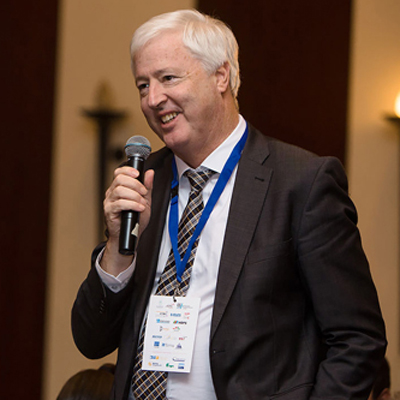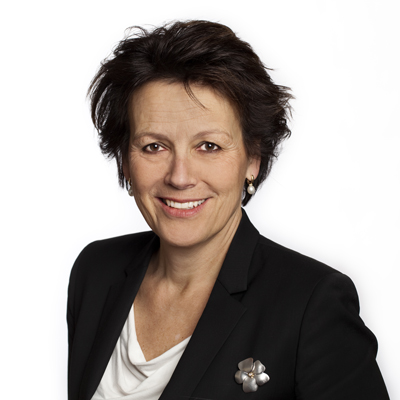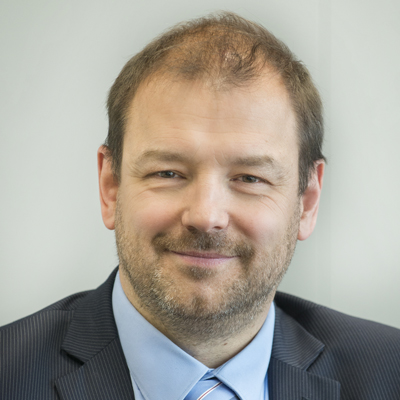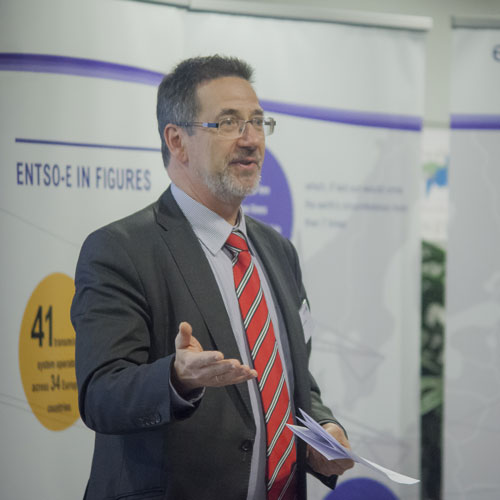INFORMATION ON BITCOINS
ENTSO-E, the European Network of Transmission System Operators, represents 43 electricity transmission system operators (TSOs) (42* members and one observer member) from 36 countries across Europe. ENTSO-E was established and given legal mandates by the EU’s Third Legislative Package for the Internal Energy Market in 2009, which aims at further liberalising the gas and electricity markets in the EU. In addition to its legal mandates, ENTSO-E is Europe at work and aims to ensure efficient cooperation of its members, supportive of the overall vision of a reliable, sustainable, and competitive European power market.
The role of TSOs has considerably evolved with the Third Energy Package, the energy transition, and the 20-20-20 targets. The TSOs are neutral facilitators in a liberalised energy market, as networks become the interface of various players.
*OST (Albania) joined ENTO-E in March 2017
Our Objectives
ENTSO-E members share a common vision of a reliable, sustainable, and competitive European power market. One of the important issues on today’s agenda is the integration of a high degree of renewables in Europe’s energy system and the development of flexibility with a much more customer-centric approach than in the past. These issues naturally lead to a much closer interaction with distribution system operators (DSOs) because a large part of the decentralised generation reaches the system through the distribution grid.
ENTSO-E is committed to developing the most suitable responses to the challenge of a changing power system while maintaining the security of supply. Security of the supply, innovation, a market-based approach, customer focus, stakeholder focus, flexibility and regional cooperation are key to ENTSO-E’s agenda.
ENTSO-E contributes to the achievement of these objectives through:
- drafting network codes – the rules of the game of the internal energy market and their implementation in close interaction with the Agency for the Cooperation of Energy Regulators (ACER), the European Commission, and all stakeholders;
- developing pan-European 10-year network development plans (TYNDPs), on which the list of projects of common interest is based;
- developing policy proposals based on the European system viewpoint;
- strengthening and focusing regional cooperation in markets, planning, and operation, most recently through the Regional Security Coordinators (RSC);
- ensuring technical cooperation between TSOs;
- publishing Summer and Winter Outlook reports for short-term system adequacy, along with annual Scenario Outlook & Adequacy Forecast reports, providing a pan-EU overview on longer term system adequacy;
- coordinating research and development (R&D) plans, innovation activities, and the participation in research programmes such as Horizon 2020;
- providing events, studies, and training.
Through these deliverables, ENTSO-E is helping to get the world’s largest integrated electricity market from promise to practice.
ENTSO-E is aware that such important tasks require a strong interaction with European institutions as well as market participants and stakeholders. Transparency is therefore a key principle for ENTSO-E and requires constant listening, learning, and improvement in the interests of society.
HOW TO GET A FREE BITCOIN
BUY BITCOIN CASH WITH CREDIT CARD
PAY4ME BITCOIN
INTEGRATE BITCOIN PAYMENT INTO WEBSITE
ASIAN BITCOIN COMAPNY
The year 2016 was the start of the network code implementation with all network codes and guidelines now adopted. Putting the codes into practice is now the priority of ENTSO-E and will remain so for the years to come.
- 2016: A year of regional cooperation – Our three regional conferences provided the opportunity for diving deep into regional concerns and increasing regional engagement. Also during the year, all ENTSO-E members signed up to RSCs, and new RSCs opened in the Nordic and Baltic regions as well as in South-East Europe.
- ENTSO-E released its 10-year network development plan (TYNDP) 2016, foreseeing up to 150 billion euros of investments in grid infrastructure and 200 projects in transmission and storage.
- Additionally, in 2016, the European Commission published its ‘Clean Energy for all Europeans’ package, addressing the policy framework for the next decade. ENTSO-E will work with EU institutions and stakeholders to further improve the package to the benefit of all Europeans.
- Finally, 2016 was the last year in office of ENTSO-E’s Secretary-General Konstantin Staschus, who founded ENTSO-E eight years ago, with our dedicated members and staff.

0208 IN BITCOIN

BITCOIN VECTOR
A YEAR OF TRANSITION
Our President, Chair of the Board and Secretary-General take you through the main developments of 2016.

0.395 BITCOIN
President
Energinet.dk, Denmark

ACCEPT PAYMENT WITH BITCOIN
Chair of the Board
Statnett SF, Norway

IS ISHARES BITCOIN TRUST A GOOD INVESTMENT
Secretary-General
Read more...
Peder Andreasen: The year 2016 was a year of transition. First, there was transition from the development of the network codes to their implementation. Five codes have become binding EU law, while three more are awaiting their entry into force. The development phase is over, and the focus is now on implementation.
Making the codes reality will be central to ENTSO-E’s work for the years to come. Far from being alone in the implementation tasks allocated to us, we rely on our collaboration with ACER and all national regulatory authorities (NRAs), with EU member states, and with all involved stakeholders.
Bente Hagem: Indeed, none of our legally mandated deliverables would have existed if it were not for constant engagement with EU institutions and power market participants. ENTSO-E’s legal mandates come with great responsibilities. We must ensure that all parties affected by our deliverables – be it the TYNDPs, the network codes, or others – are involved and their opinion is considered throughout the whole process.
Moreover, 2016 saw ENTSO-E taking one step further in opening to stakeholders with the creation of our independent Advisory Council. The first two meetings saw lively discussions on ENTSO-E’s work programme and output, and I am confident that the council will trigger a new dynamic of transparency in the coming years.
Laurent Schmitt: In addition, 2016 saw the publication of the ‘Clean Energy for all Europeans’ package of proposals by the European Commission. There could not be a more exciting time for me to join ENTSO-E, as Europe takes the leading role in placing customers at the heart of the power system. Ahead of us are ground-breaking changes. It is up to us to facilitate the radical transformation in the way that electricity is consumed and produced – from the development of digital grids to connecting record-high levels of renewables to the system.
ENTSO-E’s joint work with distribution system operators (DSOs) on data management and active power management is one small step towards that digital revolution. There will be more in years to come, and ENTSO-E will help by identifying how to best build the adequate IT infrastructure, starting with the publication of an IT roadmap in 2017.
Peder Andreasen: The TSOs’ R&D and innovation efforts will be instrumental in transforming the power system. ENTSO-E’s new research & innovation roadmap, covering the period 2017 to 2026, looks ahead at the areas where innovation is needed to bring about the EU’s climate objectives and deploy smart grids. Our R&D monitoring exercise found steady progress in the completion of R&D objectives.
Also released in the past year, our 10-year network development plan 2016 ensures the grid infrastructure is fit to achieve Europe’s climate objectives by 2030, foreseeing up to 150 billion euros of investments in grid infrastructure supporting 200 projects in transmission and storage.
Bente Hagem: Action at regional level is key to security of supply, renewable integration and more efficient markets. In 2016 ENTSO-E went to Vilnius, Bratislava and Thessaloniki, to meet local stakeholders and discuss local issues in three regional conferences. These were a success and we’ll organise similar events in 2017.
Regional security coordinators are another example of action at regional level. Initially an initiative of TSOs who wanted to coordinate their task of maintaining the operational security of the electricity system, they have now become mandatory and will cover the whole of Europe by end of 2017.
Laurent Schmitt: RSCs are indeed a major step towards increased system security. ENTSO-E also innovates in that area, with the publication in 2016 of the first pan-European probabilistic assessment of adequacy, the midterm adequacy forecast (MAF) 2016, looking at risks to the security of the supply and the need for flexibility over the coming decade.
We will continue innovating in 2017 and the following years to support the transition towards a cleaner, safer, digital energy system. I would like to thank the stakeholders and TSOs for their essential input and support and look forward to our continued collaboration.

PROSHARES BITCOIN FUTURES ETF
Secretary-General of ENTSO-E from its foundation to January 2017
Proudly looking back and forward by Dr. Konstantin Staschus
Hardly anyone in Brussels or those working in electricity in any European country knew of ENTSO-E in 2009. The European Commission, Council and Parliament had defined us in the 3rd Internal Energy Market Package, and the TSOs’ top managers had agonized over the merger of ETSO, UCTE, Nordel and other regional voluntary associations into ENTSO-E. However, not one of them knew how long ENTSO-E would live, whether we would fulfil our legal mandates, whether we would always argue for TSO bottom line interests or for the public good, or how many different work products, working groups, projects and employees we would have. Now we know and many in Brussels and in the electricity industry know, and so we can be proud of the answers.
Read more...
ENTSO-E is alive and well, every legal mandate has been fulfilled on time and with high and ever-improving quality, and the public good guides our decisions, yet we nonetheless speak up when key TSO interests are endangered. The 100 or so work products every year continue to get the necessary input and support from 2000+ experts from all TSOs because they help us all keep the lights on and the energy transition affordable. Failure was not an option, you might say, and that made my job easy.
Well… easier than it might be otherwise, just as the TSOs’ work products in terms of network plans and codes, R&D, transparency, operational coordination, and market coupling make the energy transition more affordable than it could have been. The energy transition is not cheap, and being the ENTSO-E Secretary-General is not an easy job, but the importance of the former going well is such a huge motivator for me and the ENTSO-E staff and members that we happily invest the hard work. But eight years away from home seemed enough; the expat life is exciting, though for us, not sustainable into retirement, and I hope to support the energy transition from Berlin with a focus on European, and even global, energy R&D and innovation.
Please give your support to my successor, Laurent Schmitt, who is especially well-prepared for the smart grid and empowered customer developments, which are one of the key drivers of change in energy today. Please keep the system view on the energy transition, and please keep building trust and a more perfect market design with an investable price of CO2. Finally, please keep being guided by the knowledge that the energy transition cannot succeed with lights on and affordability in each nation alone, but only in Europe together, just like freedom, democracy, and honest business all need a united Europe.
Download the full annual report

